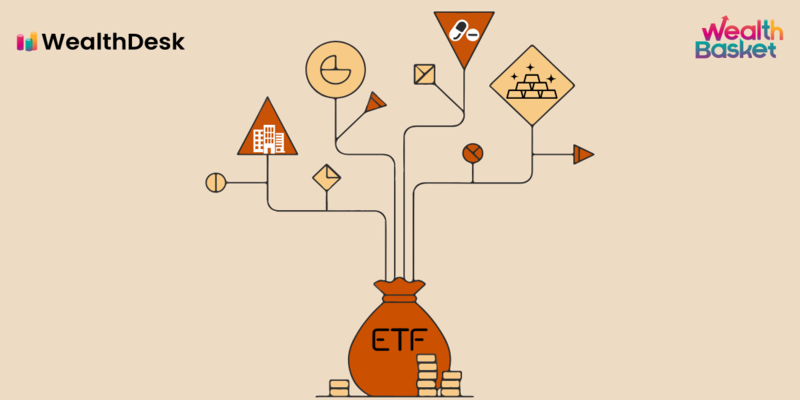The two most common types of stock market investments are exchange-traded funds (ETFs) and index funds. Both investments are similar in passively following an existing market index like the S&P 500 to mimic that index's performance. Investors should be aware of the distinctions between stocks and bonds, though. The trading structure of ETFs is distinct from that of index funds. Similar to stocks, ETFs trade all day long on an exchange. This means that exchange-traded fund (ETF) prices change daily in response to market conditions. Yet index funds are traded at the end of the day at their NAV (NAV). In addition, exchange-traded funds (ETFs) may provide more liquidity than index funds because they can be purchased and sold more often and on leverage.
Trading Mechanics
How ETFs and index funds are traded is a key distinction between the two. Like stocks, exchange-traded funds (ETFs) trade all day on an exchange, and their prices rise and fall with supply and demand. So, an ETF's price may fluctuate relative to the NAV of the following stocks. An index fund's Net Asset Value (NAV) is the price at which shares can be purchased or sold at the close of business on any given trading day.
Cost
Whether an investor is considering an ETF or an index fund, the cost is always a major consideration. The expense ratios of ETFs are typically lower than those of index funds. The expense ratio is the annualized proportion of an ETF's total assets that pay for the fund's management. Due to their nature and the overhead of keeping a portfolio in line with the index, index funds often have higher expense ratios. Since ETFs can be traded much like stocks, which often have lower transaction fees than index funds, they may also have reduced trading expenses.
Tax Efficiency
Investors should also think about how their decisions may affect their tax liability. Because of their design, ETFs can minimize their tax liability compared to index funds. To reduce the impact of capital gains taxes and other types of taxes, ETFs redeem shares through in-kind transfers of securities. This decreases the frequency of taxable events occurring in the fund due to trading. However, due to their design and the requirement to sell securities to meet investor redemptions, index funds may be liable to higher capital gains taxes.
Diversification

One of the most effective ways to lower overall portfolio risk is through diversification. Mutual funds and index ETFs are similar in that they both aim to replicate the performance of an index composed of many different stocks. But because they can follow several different indices or sectors, ETFs may provide more diversity than index funds. Unlike an index fund, which may solely follow the US stock market, an exchange-traded fund (ETF) may follow an index that includes stocks worldwide.
Trading Flexibility
When compared to index funds, ETFs provide greater trading versatility. Like stocks, ETFs can be bought and sold throughout the trading day, making them attractive to aggressive traders and investors who prefer to make frequent trades. Margin trading in ETFs provides investors with the opportunity to boost their returns through the use of leverage. However, index funds are preferable for buy-and-hold investors who wish to avoid the dangers of day trading because they may only be purchased or sold after the trading day.
Minimum Investment
Investors should also think about any required minimum investments. Investors with smaller budgets will find ETFs more approachable because of their reduced minimum investment requirements compared to index funds. Certain exchange-traded funds (ETFs) have no entry point for new investors because they do not demand a minimum investment. The entry barrier for index funds may be higher than those of other types of mutual funds.
Transparency

Investment decisions benefit greatly from complete openness. Because of their daily holdings disclosure and the availability of real-time share prices, exchange-traded funds (ETFs) are regarded as extremely transparent investment vehicles. Index funds are less transparent than other investment vehicles because their holdings are only disclosed every quarter. Both ETFs and index funds are open about their underlying holdings and expenses.
Conclusion
To acquire exposure to a broad group of companies at a low cost and with minimal risk, investors can choose between exchange-traded funds (ETFs) and index funds. The key distinctions between the two investment vehicles are trading mechanisms, fees, tax efficiency, diversification, trading flexibility, minimum investment requirements, transparency, liquidity, performance tracking, and active vs. passive management. While deciding between exchange-traded funds (ETFs) and index funds, investors should consider their preferences, investment horizon, and risk tolerance.



